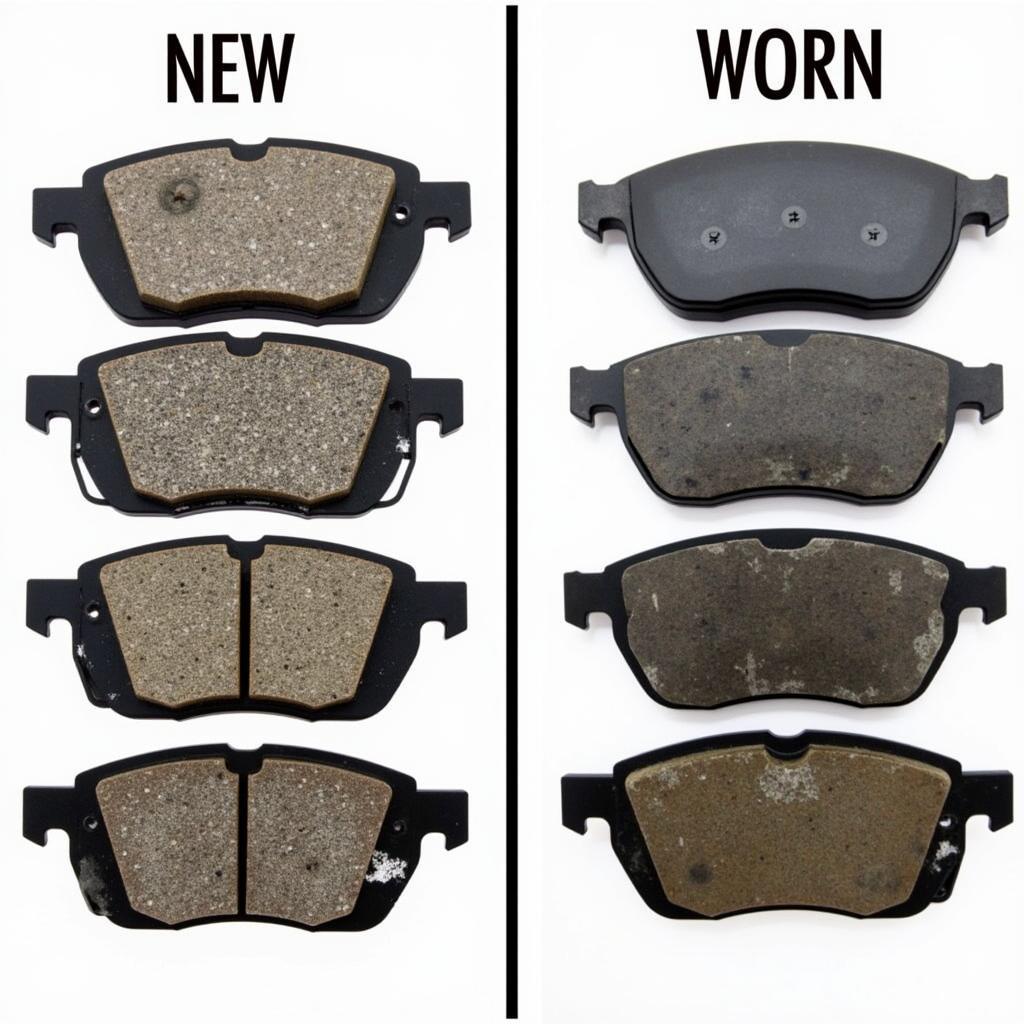The brake warning light on your Toyota Sienna dashboard is a crucial safety feature, designed to alert you to potential problems within your braking system. Ignoring this warning light could lead to decreased braking performance and potentially dangerous driving situations. This comprehensive guide will explore the common causes of the Toyota Sienna brake warning light and provide you with the knowledge to diagnose and address the issue.
Understanding Your Toyota Sienna’s Brake System
Before delving into the causes of a brake warning light, it’s helpful to understand the basics of how your Sienna’s brake system operates. Your Sienna utilizes a four-wheel hydraulic brake system, meaning brake fluid pressure is applied to all four wheels when you press the brake pedal. This system relies on several key components:
- Brake Pedal: The pedal you press to activate the brakes.
- Brake Booster: This component amplifies the force you apply to the brake pedal, making braking easier.
- Master Cylinder: The master cylinder converts the mechanical force from the brake pedal into hydraulic pressure.
- Brake Lines: These lines carry the pressurized brake fluid to each wheel.
- Brake Calipers (Disc Brakes) / Wheel Cylinders (Drum Brakes): These components house the brake pads (disc brakes) or brake shoes (drum brakes) that make contact with the rotors or drums to slow or stop the vehicle.
- Brake Fluid: A specialized hydraulic fluid that transmits the pressure from the master cylinder to the brakes.
Common Causes of a Toyota Sienna Brake Warning Light
When the brake warning light illuminates on your Sienna’s dashboard, it can indicate several potential issues, ranging in severity.
1. Low Brake Fluid Level
One of the most common and easiest to diagnose causes is low brake fluid. Brake fluid is essential for transmitting hydraulic pressure from the master cylinder to the brakes. Over time, brake fluid levels can drop due to:
- Worn Brake Pads: As your brake pads wear down, the brake calipers need to extend further to maintain contact with the rotors. This extension requires more brake fluid, leading to a lower fluid level in the reservoir.
- Brake Fluid Leak: A leak anywhere in the brake system will result in a loss of brake fluid. Inspect your garage floor or driveway for any signs of leaks.
- 2002 Toyota Sienna Brake Warning Light: If you own a 2002 Sienna and notice the brake warning light, low brake fluid could be a common culprit given the vehicle’s age and potential for component wear.
How to Check and Add Brake Fluid:
- Locate the brake fluid reservoir under the hood. Refer to your owner’s manual for the exact location.
- Check the fluid level. The reservoir will have a “Min” and “Max” marking. If the fluid level is below “Min,” add the appropriate DOT 3 or DOT 4 brake fluid (as recommended in your owner’s manual).
- Important: If you need to add brake fluid frequently, it’s crucial to have your brake system inspected by a qualified mechanic to identify and repair any leaks.
 Toyota Sienna Brake Fluid Reservoir
Toyota Sienna Brake Fluid Reservoir
2. Worn Brake Pads
Brake pads are designed to wear down over time with use. When they reach a certain thickness, the brake warning light will activate to alert you that replacement is necessary.
Signs of Worn Brake Pads:
- Squealing or Screeching Noises: High-pitched noises when braking are often the first sign of worn brake pads. This sound comes from a wear indicator built into the brake pad itself.
- Grinding Noise: A loud grinding noise indicates the brake pad material is completely worn, and metal is rubbing on metal. This can cause significant damage to your rotors and should be addressed immediately.
- Vibrations When Braking: Worn brake pads can cause vibrations or pulsations through the brake pedal or steering wheel.
2006 Toyota Sienna Brake Warning Light On: Many 2006 Sienna owners have reported brake warning light issues related to worn brake pads. The frequent use of these minivans for family transportation can contribute to faster brake pad wear.
Replacing brake pads is a standard maintenance task best left to a professional mechanic unless you have experience working on brakes.
 Worn Brake Pads on Toyota Sienna
Worn Brake Pads on Toyota Sienna
3. Brake System Malfunctions
While low brake fluid and worn pads are the most common reasons for the brake warning light, other brake system malfunctions can also trigger the light. These issues are more complex and require diagnosis by a qualified mechanic:
- Faulty Brake Caliper: A sticking or seized brake caliper can cause uneven braking, pulling to one side, and activate the warning light.
- Master Cylinder Failure: A malfunctioning master cylinder may not generate adequate hydraulic pressure, compromising braking performance.
- ABS Issues: If your Sienna’s Anti-lock Braking System (ABS) encounters a problem, it can illuminate the brake warning light. This usually requires specialized diagnostic equipment to pinpoint the issue.
- Toyota Sienna Check Brake System Warning: If your Sienna displays a “Check Brake System” warning, it signals a more serious problem requiring immediate attention. This warning often accompanies the brake light and points to a critical malfunction within the braking system.
Do Not Ignore Brake System Warnings
Any time your Toyota Sienna displays a brake warning light, it’s crucial to take it seriously. Continuing to drive with a compromised brake system can lead to brake failure, potentially causing accidents.
Conclusion
Addressing the Toyota Sienna brake warning light promptly is essential for your safety and the well-being of your passengers. By understanding the common causes, recognizing the warning signs, and knowing when to seek professional help, you can ensure your Sienna’s brake system remains in optimal working order. Regular brake inspections and timely maintenance are crucial to prevent unexpected issues and keep you safe on the road.

